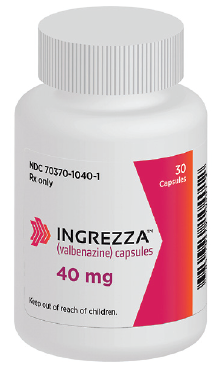The Valbenazine Story: Small Company Makes Big Breakthrough
Abstract
By incorporating an innovative video review system, the KINECT-3 study overcame a major obstacle in conducting multisite clinical trials—variability.
This past April, the U.S. Food and Drug Administration (FDA) approved the first pharmacotherapy for tardive dyskinesia—valbenazine (Ingrezza).

The approval was based largely on the 234-person KINECT-3 study, published in the May issue of American Journal of Psychiatry (AJP). The study subsequently received praise in a June 29 perspective article published in the New England Journal of Medicine (NEJM).
The commentary highlighted how a small biotech company with no previous FDA approvals brought an important medication to market quickly through efficient trial design. It also reflects how AJP is committed to publishing groundbreaking research.
The key element of KINECT-3 that was noted was the use of independent video raters to diagnose the severity of movement problems. It was an innovative approach, the seeds of which Christopher O’Brien, M.D., chief medical officer at Neurocrine Biosciences—the company behind valbenazine—remembers vividly. It occurred after completion of the drug’s first phase 2 clinical study. “It was a period of heartbreak and epiphany,” O’Brien said.
Prior to that, the drug discovery process at Neurocrine was a typical affair. The drug discovery team started by testing hundreds of potential molecules that would specifically inhibit the VMAT2 receptor, which is known to be relevant in movement disorders. Researchers eventually developed a derivative of a drug used to treat chorea in Huntington’s known as tetrabenazine; Neurocrine’s improved version, valbenazine, easily cleared preclinical safety studies and a phase 1 human safety study, so the stage was set to see how well this compound worked. The assessment tool used was the Abnormal Involuntary Movement Scale (AIMS).
The study failed.
As O’Brien described to Psychiatric News, the period after the failure was dark; the company’s stock, as well as morale, plummeted. This was the type of setback that could spell the end of a small startup.
Following that failure, Neurocrine invited Robert Hauser, M.D., a professor of neurology at the University of South Florida and head of the University’s Movement Disorders Center, to help determine why the study had failed and design a rigorous trial.
“It seemed apparent that the key weakness of the study was that all the evaluations were being done by the site investigators, each one with a different level of familiarity with tardive dyskinesia,” Hauser said. “We developed the notion that a small group of dedicated raters would solve that issue.”
Getting a small team of experts to travel across the country would be costly and time consuming, however. Then the epiphany struck. As part of the phase 2 study, the investigators had videotaped every participant at the beginning and end of the trial. Hauser and a colleague, Stewart Factor, D.O., a neurologist at Emory University, agreed to review the videos in a blinded manner and score the patients.
The result: there was a clear, statistically significant signal of improvement in the valbenazine group.
With these new data, the company proceeded with a new phase 2 study (known as KINECT-2) followed by KINECT-3, both of which incorporated blinded video reviews. All AIMS evaluations were done by one pair of experts who reviewed every video and had to reach a consensus score before moving on to the next video.
As noted in the NEJM perspective, KINECT-3 judiciously incorporated other elements—such as using multiple active doses, adding an extension phase, and evaluating participants who dropped out of the study—to show that valbenazine provided a sustained clinical improvement; the results were good enough to give valbenazine a breakthrough designation by the FDA.
“I was most proud of what we accomplished in creating the video rating system, but the drug also did its part,” said Hauser, who was one of the lead authors on the KINECT-3 study. “Valbenazine had solid efficacy and high tolerability, and most of our patients stayed in the trial.”
Hauser added that while the medication directly benefits patients, it has had another positive impact. The arrival of the first-ever tardive dyskinesia drug helped spur broader physician interest in this condition, which benefits patients indirectly as more doctors can identify this problem and refer patients to specialists.
O’Brien and other researchers at Neurocrine, meanwhile, are already moving valbenazine down a second pipeline for the treatment of tics in children with Tourette’s syndrome. While the experience of the initial approval process is valuable, each new approval has its own challenges.
In the case of Tourette’s, one hurdle is that the video rating system cannot be employed. The Yale-Brown Obsessive-Compulsive Scale is used to measure symptoms of Tourette’s. “That involves not only observing a patient but also asking about tic behaviors in the past week,” O’Brien said.
The drug did not perform well in a recent phase 2a study, but O’Brien believes that was linked to using doses that were too low due to concerns about safety. A phase 2b is starting later this fall, and the team is confident that the results will be positive. O’Brien is maintaining a measure of caution, however: while Neurocrine may be one-for-one right now, he knows that drug development is difficult and time consuming, especially in psychiatry. ■
“KINECT 3: A Phase 3 Randomized, Double-Blind, Placebo-Controlled Trial of Valbenazine for Tardive Dyskinesia” can be accessed here.



